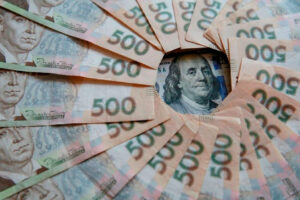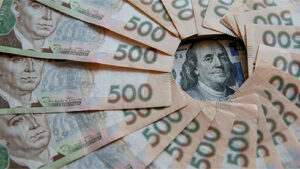
The National Bank of Ukraine (NBU) fined ODO SK “Premier Garant Profi” in the amount of UAH 595 thousand for violation of requirements in the field of financial monitoring.
As reported on the website of the regulator, the fine was imposed for improper performance by the institution of duties in full to submit to the requests of the National Bank reliable information, documents, copies, extracts from documents relating to the implementation of the institution of the requirements of the legislation in the field of prevention and counteraction to legalization (laundering) of proceeds of crime, financing of terrorism and financing the proliferation of weapons of mass destruction.
In addition, the fine was imposed for violation in terms of non-compliance of the institution with the requirements of the content of contracts concluded with agents, as well as in terms of the company’s failure to take measures to obtain the permission of the head of the institution to establish business relations in respect of clients whose ultimate beneficial owner is a politically exposed person.
As reported, earlier in January this year, the NBU has already fined SK “Premier Garant Profi” in the amount of UAH 51 thousand for violation of requirements in the field of financial monitoring.
IC “Premier Garant Profi” was registered in 2011. Specializes in risk insurance. According to the company’s data, its shareholder is Elena Ermolova owns 99.99% of the company indirectly through LLC “Alpha Lex LTD”.

The 2.9% decline in hryvnia deposits in January after a 4.6% increase in December was seasonal and not related to the discussion of the draft law on mobilization, as evidenced by the 2.3% increase in hryvnia deposits in February, National Bank of Ukraine Governor Andriy Pyshny said.
“From year to year, customer account receipts increase at the end of the year and decrease at the beginning. This is a logical trend that was also present in peacetime. Businesses and the government try to complete all payments, including salaries, by the end of the year, and at the beginning of the next year, people spend or invest these funds,” Pyshnyi explained the seasonality effect.
According to him, the National Bank did not see any noticeable impact on the dynamics of deposits from the draft law on mobilization and “fake news” about the alleged introduction of taxation on all card transactions, which was refuted by the Ministry of Finance.
“Moreover, in the first weeks of its (the draft law on mobilization) discussion, the balances continued to increase. In addition, the relevant parliamentary committee has clearly stated that it will not support the provision on blocking accounts. This is possible, as it is now, only in court,” he emphasized.
Pyshnyi also clarified that the central bank did not make “any breakthrough innovations” regarding the disclosure of banking secrecy in February.
“We only clarified the terminology in accordance with the changes in the legislation on access to information, which the authorized state bodies had had before these changes in accordance with the established procedure. The NBU will continue to support initiatives aimed at combating the shadow sector, while strictly upholding the protection of the confidentiality of banking operations in accordance with international standards. we have only clarified the terminology,” the NBU governor said.
The NBU on its Facebook page followed the governor and reminded that in 2023, the amount of hryvnia funds held by households in banks increased by UAH 121 billion, or 20.5%, and reached a historic high of UAH 711 billion, and as of early March, households kept about UAH 707 billion in hryvnia accounts in banks.
“These indicators demonstrate confidence in banks and the national currency, and the share of time deposits of individuals in hryvnia increased by 4.2 percentage points over the year. Despite the widespread war, the level of dollarization of household deposits decreased by more than 2 percentage points to about 34%,” the regulator said.

The reference exchange rate of the hryvnia to the US dollar on the interbank foreign exchange market as of 12:00 a.m. on March 7, 2024.
Indicator 06.03.2024 07.03.2024 07.03.2024 Change, %.
Reference hryvnia to US dollar (UAH/$) 38.3099 38.1029 -0.54

Russia’s full-scale invasion of Ukraine has virtually eliminated the demand for foreign currency loans, contributing to a reorientation to lending in the national currency, which is a good indicator for the economy, according to Pervin Dadashova, director of the NBU’s Financial Stability Department.
“Hryvnia lending prevails, and in general, in principle, the hryvnia is more attractive for lending than foreign currency. This is very important, and I think that this love for lending in hryvnia should continue,” she said at a discussion held by the Center for Economic Strategies (CES).
Dadashova noted that earlier the main motivation for foreign currency lending was lower interest rates on such loans, which led to problems in the absence of real needs and revenues in foreign currency. According to her, the risks of foreign currency lending, which increased during the war, have sharply reduced business interest in the dumb
The Director of the NBU’s Financial Stability Department noted that the loan portfolio has recently stabilized and returned to a slight increase, and now banks are faced with the task of compensating for its loss during the war, which, according to various metrics, amounted to about 15%.
“Now the quality of the loan portfolio is absolutely normal, it is even better than before the war. That is, banks are not losing as much credit risk as they did a few months ago,” the expert emphasized.
She clarified that the small growth in the loan portfolio so far is largely due to the growth under government support programs.
“However, a greater openness to new lending is already noticeable, including in our surveys,” Dadashova noted.
Among other trends, she noted an increase in the share of small and medium-sized businesses (SMEs) in the loan portfolio to more than 50%.
“A significant part of them belongs to business groups, so it is not a pure small business, it is still a big business, but it is structured in a certain way. But in the total portfolio, 15% of loans are granted to debtors who do not belong to business groups,” the expert said, emphasizing that they are a “good engine” for market lending.